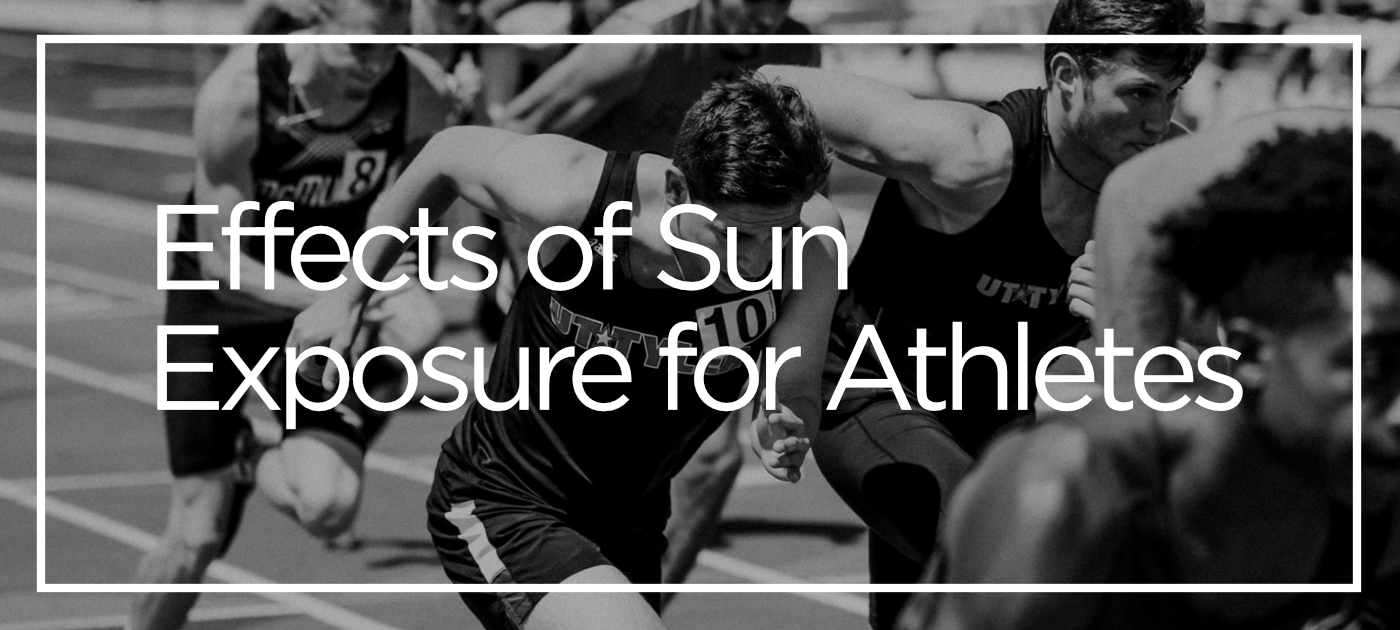Originating from the sunny state of Queensland, Australia, the sun is constantly beating down on us. As Aussies we love our outdoor activities ranging from the occasional ‘barby’ (Australian slang for BBQ) or our Sunday league, it is worth reminding ourselves of the importance of sun protection.
ESPECIALLY for our athletes.
Like many of my fellow Australians I’ve regularly attended many sports events from Golf, AFL, Soccer but only during a few occasions found the 50+ sun protection lotion, which raises the question.
What about our athletes?
Athletes generally train 2 to 3 hours a day training with little protection from long sleeved clothing and they are amongst the most susceptible of individuals to sun damage.
Excessive UV exposure occurs in sports such as: Golf, running, cycling, triathlon, and other outdoor events [1]. The awareness regarding sun damage and protection overall seems to be good. However, their sun protection practices are often poor [2].
Excessive sun exposure is the strongest risk factor for many dermatological malignancies. This includes basal cell carcinoma, squamous cell carcinoma and malignant melanoma [3]
Malignant melanoma is on the increase. [4].
As well continuous outdoor sun exposure, increasing trend among society to use tanning beds/booths cause further problems. Athletes feel the pressure to conform to the societal aesthetic trends. Many performing their matches in minimal clothing as it pushes confidence in their appearance. A ‘golden glow’ is often favoured to the pale complexion for the ‘athletic look’
As many practitioners who are responsible for the health of these athletes try to push for sun safety policies, perhaps we as society be pushing sun protection advice more aggressively?
Here is are our TOP 7 sun protection tips for athletes:
1) Always use sun protection when out between the 11am – 3pm.
2) Know your skin – type 1 skin is much more likely to burn than type 6, with “sunburn” increasing the risk of sun damage and subsequently skin cancer.
3) Know your burn time.
4) ALWAYS wear a hat and long sleeved clothes / SParms sun sleeves if you are in sports.
5) Extra care exercising near water or snow as the reflection can cause faster burns.
6) Know your moles; monitor with regular check-ups.
7) Know your family history; malignant melanoma has a strong genetic component.
References
[1] Moehrle M. Outdoor sports and skin cancer. Clin Dermatol. 2008 Jan-Feb;26(1):12-5.
[2] Cohen PH, Tsai H, Puffer JC. Sun-protective behavior among high-school and collegiate athletes in Los Angeles, CA. Clin J Sport Med. 2006 May;16(3):253-60.
[3] Stenback F. Cellular injury and cell proliferation in skin carcinogenesis by UV light. Oncology 1975;32(2):61-75
[4] Accessed via http://www.cancerresearchuk.org/ on 22/08/2012
*******************************************************************************************************************************
Find out more about SParms and it's certified UPF50+ sun protective range by clicking the links below:
Sleeves UPF50+
Shoulder Wraps UPF50+
Body Shirts UPF50+
More UPF50+
SP arms Team,
This is for information purposes only, always consult your medical professional

0 comments